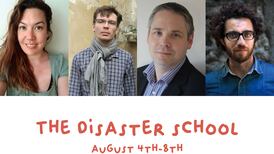
The history of Irish periodical journalism has been unjustly ignored, so this book is very welcome. But first, what this collection of essays is not. It is not a traditional history of the Irish periodical, nor is there general agreement between its covers about what constitutes a periodical. The collection has little coherence, and it is a moot point if all the publications examined here would be considered periodicals at all.
None of that matters. The choice might be eccentric, but the collection offers some great scholarship and a sort of alternative history of the State since independence. And any collection that includes both the Capuchin Annual and Hot Press must be welcome.
The collection starts with Colum Kenny on Arthur Griffith's many editorships and ends with Kevin Rafter on Magill. The path to Magill goes via An Claidheamh Soluis agus Fáinne an Lae, by Regina Uí Chollatáin, to a scholarly study of DP Moran and the Leader by Patrick Maune, to Sonja Tiernan's study of the suffrage journal the Irish Citizen, edited by Francis Sheehy-Skeffington and James Cousins, and then James Curry on the short-lived Worker, edited by James Connolly.
Ian Kennealy looks at the Irish Bulletin between 1919 and 1921; it is probably best described as a public-relations publication, as it was sent to journalists from Desmond FitzGerald, the head of propaganda for the first Dáil, and was not available from corner newsagents.
The Irish Stateman's survival depended on centrist opinion winning, which, says Ian d'Alton, "by the summer of 1920, they were evidently not".
Dublin Opinion ran from 1922 to 1968 and was edited for most of its life by two civil servants, Charles Kelly and Arthur Booth. According to Felix Larkin, in its quiet way the publication could make some major claims, from helping heal the national wound of the Civil War, saving proportional representation during the 1959 referendum, and inspiring TK Whitaker. "These are considerably achievements," Larkin suggests somewhat understatedly.
The Capuchin Annual and the Furrow were two very different Catholic periodicals. Sonya Perkins argues that the Annual had a powerful impact on the way the culture of the State was defined. It was a conservative journal, in contrast to the Furrow, which under Fr JG McGarry was a vehicle for change and reflection in the Catholic Church before and after the second Vatican Council.
Minefield of censorship
John Horgan is fascinating on the way McGarry wove his way through the minefield of church censorship and the creative balancing act in reporting the papal encyclical Humanae Vitae. Horgan mentions in passing the Dominican publication Doctrine and Life, edited for many years by Austin Flannery, which shows how much work remains to do and how publications contributed to a far more nuanced history of both the State and the church.
Mark O'Brien's study of the Bell: A Survey of Irish Life during the editorship of Seán Ó Faoláin, from 1940 to 1946, is an important contribution to journalistic history. He singles out what he calls documentary journalism, or what might also be called social-issues journalism. The Bell, he says, offered a "lapsed nationalist perspective", and Ó Faoláin had, by the 1940s, "reservations about the way society had emerged since independence".
The Bell's documentary journalism challenged the conservative consensus within the two big newspaper groups: those of the Independent and the Irish Press. Only The Irish Times offered a similarly jaundiced view of the State, albeit from the perspective of southern unionists.
According to O'Brien, The Irish Times later took up where Ó Faoláin left off when he quit the Bell, which became a predominantly literary journal, by developing social-issues journalism, first with Michael Viney – who still writes in these pages each week – and then with Eileen O'Brien. The Bell and Ó Faoláin had, he writes, a "profound influence on journalism in Ireland in prompting journalism to develop beyond the confines of party affiliations".
Parts of the story
The last three essays, on Hibernia, Hot Press and Magill, are concerned with issues of the 1980s and 1990s: the rush to modernity and the social, political and moral battles. These publications not only reported and commented on the issues but were also part of those battles. They had little concern about nation-building or the nature of Irishness, as obsessed some of earlier periodicals.
Hibernia, Hot Press and Magill were vehicles for strong journalism and became nurturers of journalistic talent. The three writers of these pieces – Brian Trench, Joe Breen and Kevin Rafter – all know their publications well. As journalists they had various degrees of knowledge or involvement with those publications.
Periodicals played an important part in press history. They offered an alternative voice, not necessarily radical but different from the mainstream. More research needs to be done into their impact, but one contributor to their demise was probably the subsumption of their functions by the mainstream press.
Seeking to find what these periodicals had in common is probably a fruitless exercise. It was their sheer variety, their intelligenace and in most cases their marginal nature that marked them apart from the mainstream.
One quibble. It is a pity that, other than a few cartoons included in the piece on Dublin Opinion, there are no illustrations. So we do not even know what the journals looked like, let alone their editors.
Michael Foley, who teaches in the school of media at Dublin Institute of Technology, was founding chairman of the Newspaper and Periodical History Forum of Ireland












